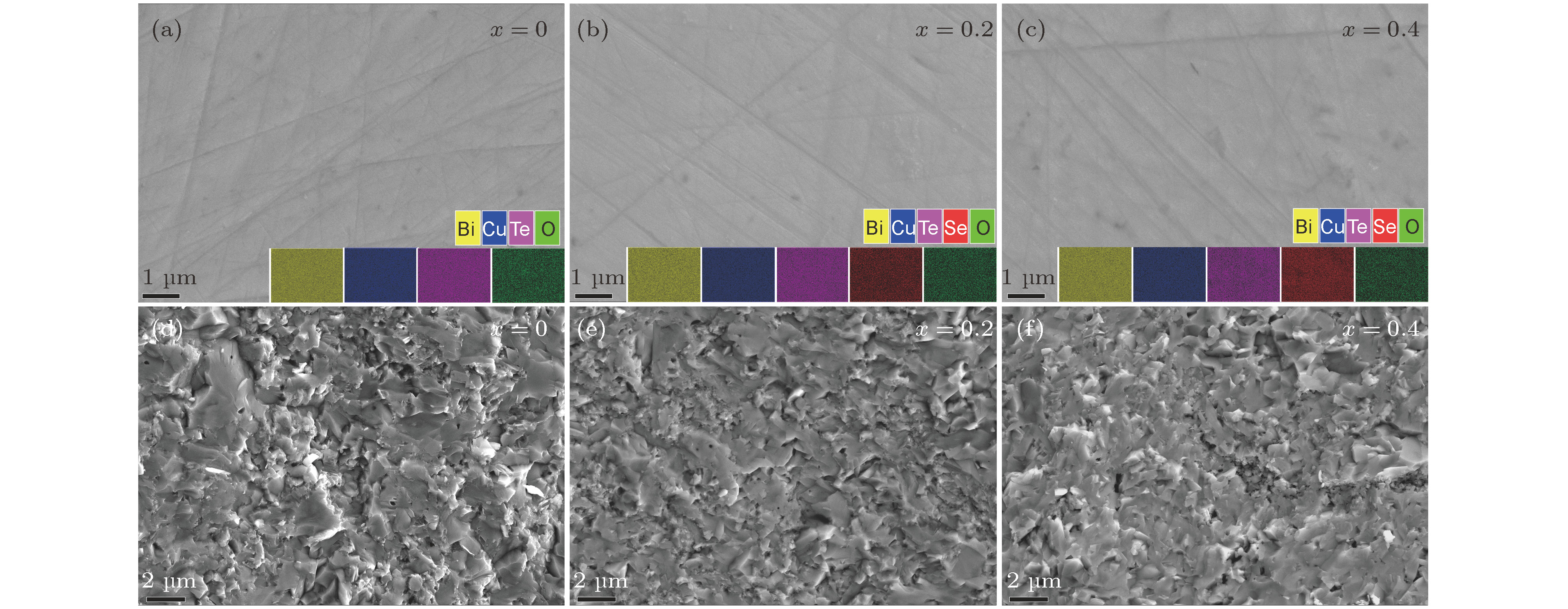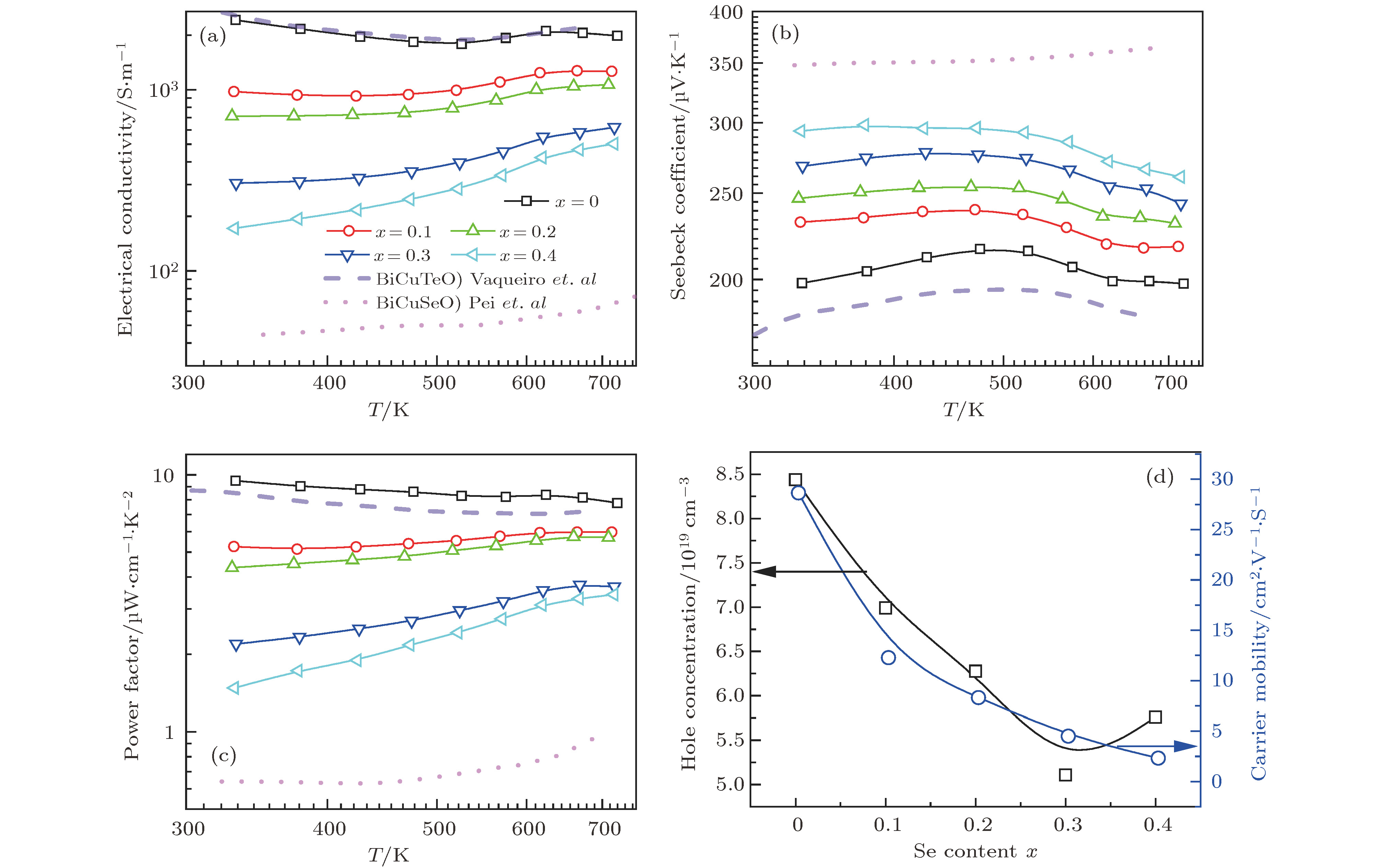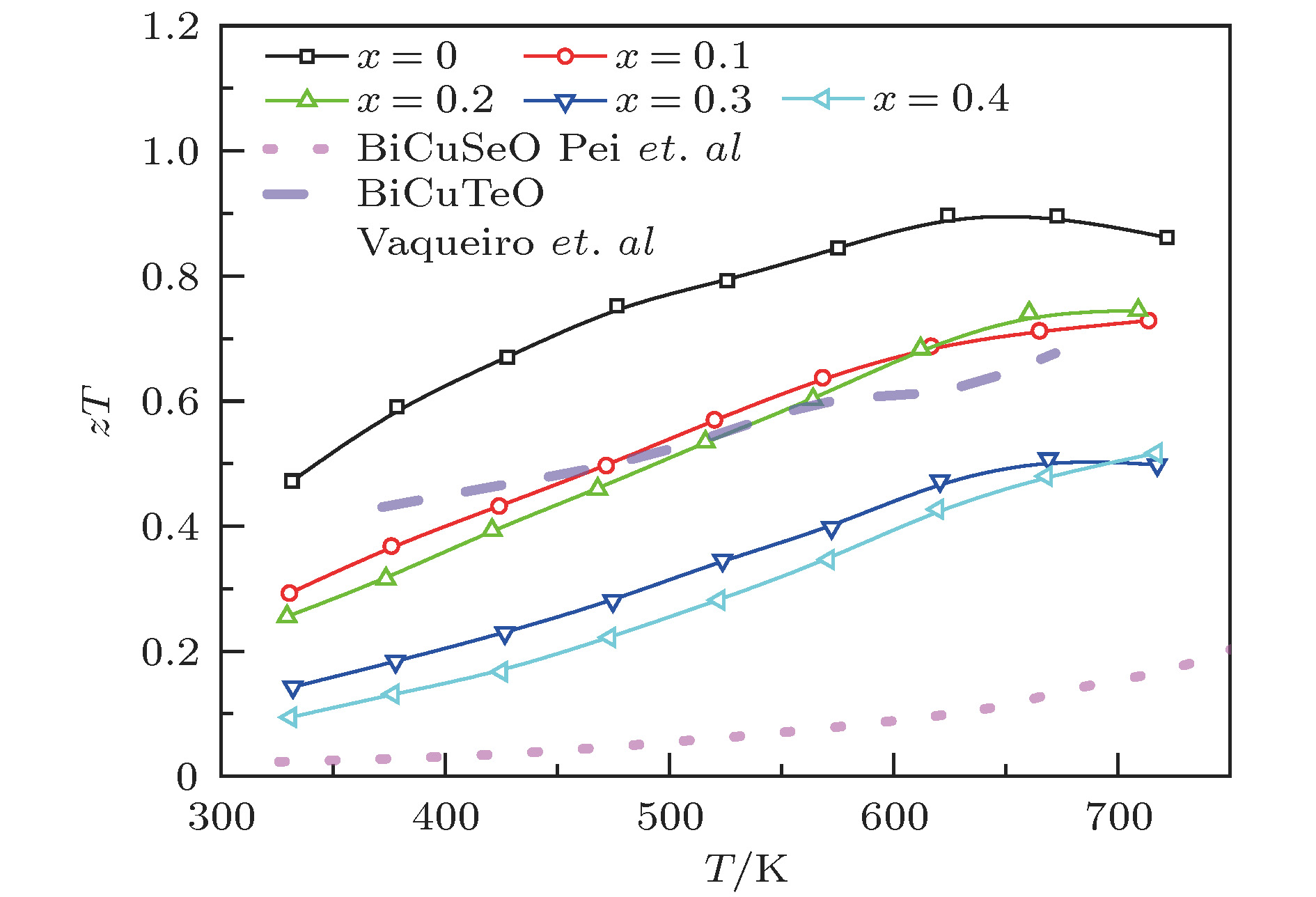Recently, layered oxychalcogenide has attracted significant scientific attention because of its intriguing electronic properties, intrinsically low thermal conductivity and, correspondingly, outstanding thermoelectric properties, of which the BiCuSeO possesses the best thermoelectric performance ever reported. For instance, the optimized
zTvalue of BiCuSeO system reaches 1.5 at 873 K through dual-doping approach. Such a
zTvalue is comparable to those of the state-of-art p-type lead chalcogenide thermoelectric materials. However, comparing with BiCuSeO compound, little effort has been devoted to the isomorphic analogue BiCuTeO. On the one hand, the BiCuTeO has a pretty small band gap (0.4 eV) which limits its working temperature range. On the other hand, numerous intrinsic Cu vacancies are present in BiCuTeO due to the weak Cu-Te chemical bonding, leading to an excessive carrier concentration. Thus, further increasing carrier concentration through doping will lead to a deterioration of electrical transport properties and thus reduce the
zTvalue. Herein, we choose Se and partially substitute it for Te in the BiCuTeO to enlarge the band gap and reduce intrinsic Cu vacancies by strengthening the chemical bonding in the conductive layers. By combining solid-phase reaction with hot-pressed sintering, the BiCuTe
1–xSe
xO (
x= 0, 0.1, 0.2, 0.3, 0.4) bulk thermoelectric materials are prepared, and their microscopic morphology and thermoelectric transport properties are systematically investigated. Our experimental results show that the substitution of Se for part of Te results in strengthening chemical bonding in the conducting layer, enlarging the band gap, increasing the carrier effective mass, reducing the carrier concentration, and enhancing the carrier scattering. Therefore, the electrical conductivity dramatically decreases but the Seebeck coefficient significantly increases with Se content increasing, leading to the decrease of thermoelectric power factor. Furthermore, a slight reduction of the total thermal conductivity is realized by Se alloying due to the decrease of the electronic thermal conductivity. Consequently, the dimensionless figure of merit
zTdecreases with the Se content increasing because electrical transport properties are deteriorated seriously. Finally, the
zTvalue of 0.3 at room temperature and 0.7 at 723 K are achieved for the sample with
x= 0.1, indicating that the Se substituted BiCuTeO sample can still maintain comparative
zTvalues in a wide temperature range. Considering that the effective mass of BiCuTeO is significantly increased by Se alloying, the thermoelectric performance of BiCuTe
1–xSe
xO compound might be further improved by optimizing the carrier concentration.














 下载:
下载:




